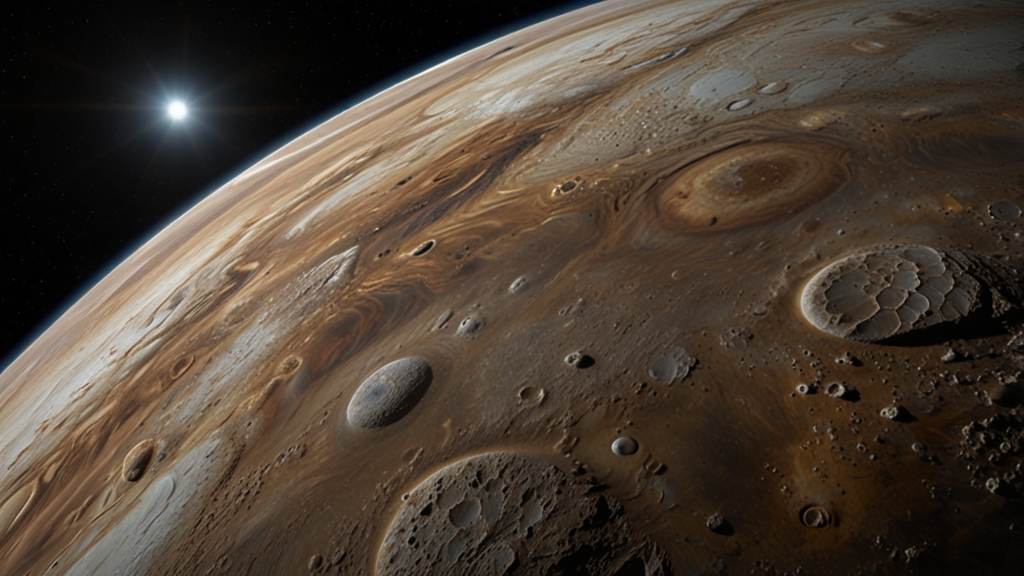Life on the Moons of Jupiter: New Evidence That Changes Everything
The search for extraterrestrial life has long captivated the imagination of scientists and the general public alike. While Mars has often been a prime candidate for such endeavors, recent revelations have shifted the spotlight to the intriguing moons orbiting Jupiter. New evidence suggests that these celestial bodies could harbor conditions suitable for life, fundamentally altering our understanding of where life could exist in our solar system.
Rediscovering Europa
One of the most promising candidates for harboring life is Europa, Jupiter's fourth-largest moon. Europa is roughly the size of Earth's moon but distinguishes itself with its strikingly smooth, icy surface. Scientists have long speculated about the potential for life beneath Europa's frozen crust, primarily because of the subsurface ocean believed to exist there.
Recent missions, notably those undertaken by NASA's Hubble Space Telescope, have provided compelling evidence supporting this theory. Observations have revealed water vapor plumes erupting from Europa's surface, suggesting that liquid water is indeed present beneath the ice. This discovery is monumental because, as we know, water is a crucial ingredient for life as we understand it.
"The presence of a subsurface ocean on Europa opens up the exciting possibility that extraterrestrial life could exist within our solar system," said Dr. Samantha Caldwell, a planetary scientist at NASA. "It's not just about finding water; it's about discovering a whole new world of biological potential."
Ganymede’s Unique Magnetic Field
Ganymede, the largest moon of Jupiter, also presents tantalizing possibilities for life. Unlike any other moon in the solar system, Ganymede possesses its own magnetic field. This magnetic field is believed to create auroras in Ganymede’s atmosphere, generating a significant level of interest among scientists.
Furthermore, data from the Galileo spacecraft has pointed to the presence of a subsurface saltwater ocean on Ganymede. This ocean is thought to be sandwiched between multiple layers of ice, providing an additional protective barrier against the harsh conditions of space. Such an environment could offer the stability needed for microbial life to thrive.
"Ganymede's unique magnetic field and internal ocean present a double-edged sword of protection and potential for life," explained Dr. Peter Wirth, a leading researcher at the European Space Agency. "It's like finding a hidden gem right in our cosmic backyard."
Callisto: The Quiet Contender
Callisto, often overshadowed by its more famous neighbors, is another moon that can't be ignored in the quest for life. Of Jupiter's moons, Callisto is the farthest from the planet, experiencing much less radiation as a result. It is also known to have a vast subsurface ocean, similar to Europa and Ganymede.
What makes Callisto unique is its age and geological history. Callisto's surface is heavily cratered, indicating it has remained mostly unchanged for billions of years. This stability could provide an ideal environment for life, particularly if microbial organisms have had the time to adapt and evolve.
The Future of Exploration
These discoveries have ignited a renewed interest in sending missions to Jupiter's moons. The European Space Agency's upcoming JUICE (JUpiter ICy moons Explorer) mission aims to conduct detailed investigations of these fascinating moons, providing more data to help answer the overarching question: Could life exist on the moons of Jupiter?
Additionally, NASA's planned Europa Clipper mission will focus specifically on Europa, aiming to conduct detailed reconnaissance of its ice shell and subsurface ocean. With such missions on the horizon, we are on the cusp of a new era in space exploration that could finally reveal if we are truly alone in the universe.
"The moons of Jupiter have always been a mystery, but now they are becoming beacons of hope for finding extraterrestrial life," stated Dr. Emily Cross, an astrobiologist at the SETI Institute. "The evidence we are gathering is not just painting a picture; it's opening a doorway to the unknown."
In conclusion, the recent evidence suggesting the presence of subsurface oceans and favorable conditions on the moons of Jupiter is a game-changer in the search for extraterrestrial life. As we continue to explore these enigmatic moons, we may be on the verge of one of the most profound discoveries in human history.







